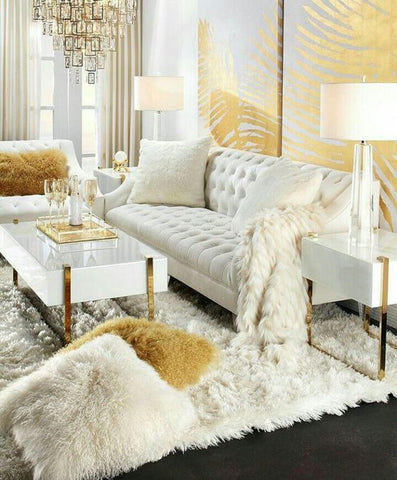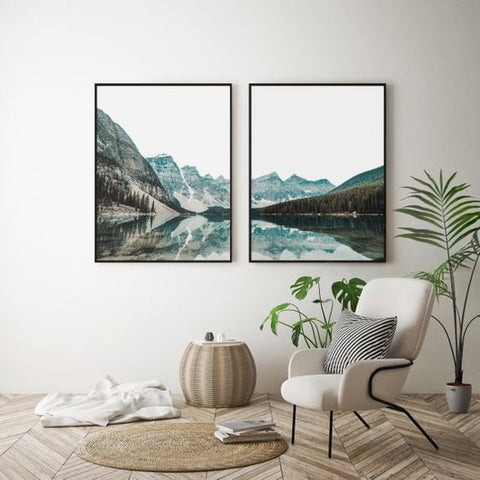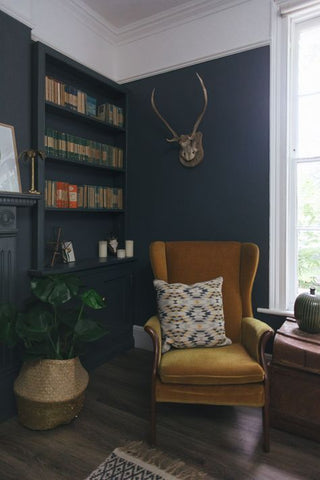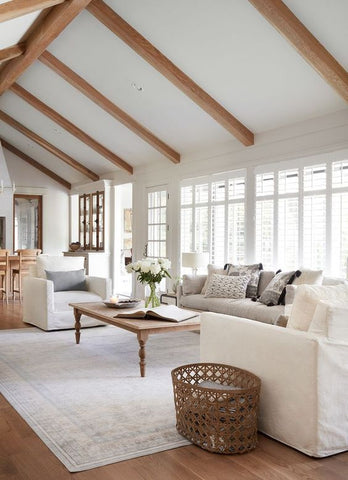28 DAY RETURNS
Top 7 Tips in Proportioning Your Living Room

A well planned living room will immediately make your space feel devised and calming. Utilise the most of living room using these tips on sizing and proportions of sofas, art, furniture and decor.
|
Layout of furniture The positioning of your sofas and chairs are important in relation to windows and walls. Try not to place large furniture against a window. If you find you need to place a sofa in front of a window due to lack of space or power points, leave a walkway space behind the sofa. If this is not achievable, solid curtains can create a wall like feature. Just be mindful of how they open. |

|
|
Artwork arrangement & hanging A common mistake is art size and positioning. There are many different forms of art sizes. If you have a long wall, a triptych arrangement is an effective way to elongate and create space. A Triptych is 3 pieces of art which marry together to either create one image or have a colour or pattern correlation between them. The typical gap to leave between prints is approximately 100-150mm. Sometimes one large piece can be overwhelming, two similar prints side by side is also another great way to use space. This is not to say one large piece will not work, always keep in mind the positioning of your furniture and span of the wall. This should guide your artwork size choice. Artwork should be hung with the centre point at eye sight. Keep in mind the height of your ceilings. If you have high ceilings this can be lost if hung too low. |
 |
|
Over cluttering A trick designers often use when finishing off a space is to stand back and remove one item. Less is more in most circumstances but is also dependable on the style. Hamptons, French Provincial warrants layers whereas Modern and Contemporary suits a sleeker, simple décor. Decisions should be based on scale and guided by room and furniture size. However just because there is an empty space, this does not mean this needs to be filled; white space is good for a room as it highlights other pieces in the room. |
|
What size sofa and how many? This question is dependable on the size of your area. Sofas can be used to zone you living/dining. If you have a large space a two and three seater is ideal or don’t be afraid to use a three seater with two arm chairs. Armchairs look sophisticated placed next to each other. If your space is smaller, a two seater may be ideal however adding in a single armchair will make the space feel grand without being cluttered. |
|
Take into account height Height is often forgotten, when designing a living room. Elements that help accentuate or utilise height are curtains, bookcases, wall panelling and artwork. This draws attention upwards and give sense of grandeur. Tall items such as plants and floor lamps also add to this sense. This is important to both low and high ceilings. Low ceilings need to have the feel that they are larger and high ceiling rooms require wall space utilised. |
 |
|
A rug that is too small One of the first errors designers notice when walking into a living room is a disproportionate rug. Rugs are designed to not only create warmth but zone an area. Rugs should be used to connect items in the space. This means placing the rug slightly under sofas and chairs giving them unity between furniture. If in doubt always go larger with you rug to make the space feel larger and not in seperate peices. |
 |
|
Balance heavy pieces Balance you heavier items such as sofas, TV unit and sideboard. This is another circumstance where size of the room is to be taken into account. Try not to clutter the large items together but have space for smaller items beside. Connecting is important not only though rugs but in furniture and styling pieces |




































